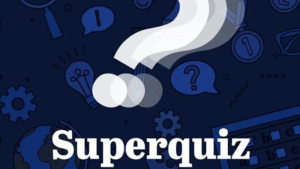
OpenAI has announced the launch of two new artificial intelligence (AI) models, gpt-oss-120b and gpt-oss-20b, which can be downloaded and customized by users at no cost. This strategic shift aims to compete with similar offerings from both American and Chinese companies. The release on October 3, 2023, aligns with OpenAI’s commitment to transparency and its origins as a nonprofit organization.
Sam Altman, the chief executive of OpenAI, emphasized the organization’s mission since its inception in 2015 to ensure that Artificial General Intelligence (AGI) serves humanity’s best interests. He stated, “Going back to when we started in 2015, OpenAI’s mission is to ensure AGI that benefits all of humanity.” The open-weight models allow users to access the trained parameters, enabling them to fine-tune the technology for various applications.
The gpt-oss models are designed to deliver strong performance at a low cost, making them suitable for tasks such as internet searches and code execution. They are optimized for easy deployment on local computer systems, which could significantly enhance research capabilities and product development. Altman expressed optimism about the potential for new types of research and products stemming from this release, stating, “We are quite hopeful that this release will enable new kinds of research and the creation of new kinds of products.”
OpenAI’s announcement comes as the company faces increasing pressure to be more open about its technology. The organization is collaborating with partners, including Orange, a leading French telecommunications company, and Snowflake, a cloud-based data platform, to explore real-world applications of the new models. The open-weight approach differentiates these models from others in the market, providing flexibility for users to adapt the technology to their needs.
During a briefing with journalists, Greg Brockman, OpenAI’s co-founder and president, noted, “This is the first time that we’re releasing an open-weight model in language in a long time, and it’s really incredible.” This approach mirrors the practices of other tech giants, such as Meta, which have embraced open-source methodologies.
In addition to enhancing accessibility, OpenAI has implemented safeguards to prevent the misuse of its models. Altman acknowledged earlier this year that the company had been “on the wrong side of history” regarding its openness, which has been a significant point of contention. He also reaffirmed that OpenAI would continue operating as a nonprofit, moving away from plans to convert into a for-profit entity, which had drawn criticism from AI safety advocates and co-founder Elon Musk.
The revised structure allows OpenAI to generate profits through its commercial arm while remaining under the oversight of a nonprofit board. This decision aims to alleviate concerns from investors seeking returns, while still adhering to the principles that guided its founding.
In summary, OpenAI’s release of free, customizable AI models marks a pivotal moment in its evolution, reinforcing its commitment to transparency and innovation in the rapidly advancing field of artificial intelligence. The collaboration with industry partners and the focus on user accessibility reflect a strategic response to the competitive landscape and a dedication to fostering responsible AI development.







